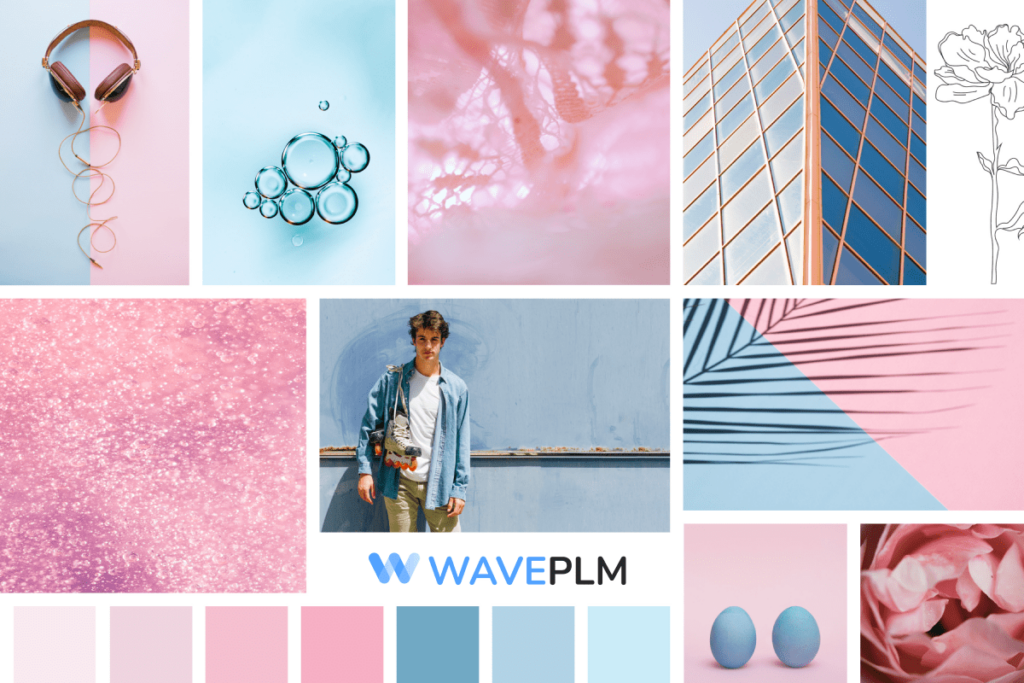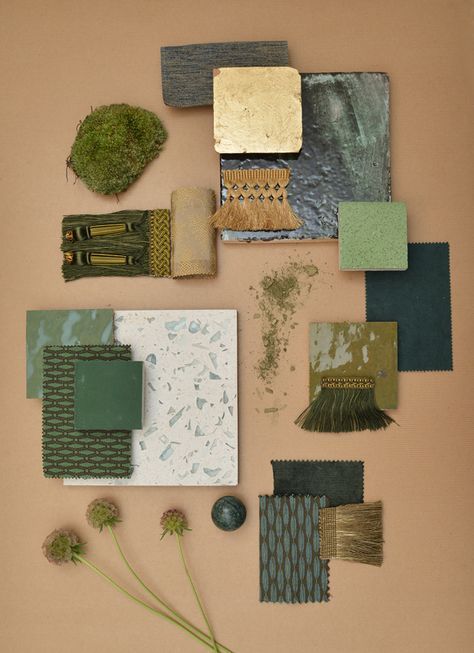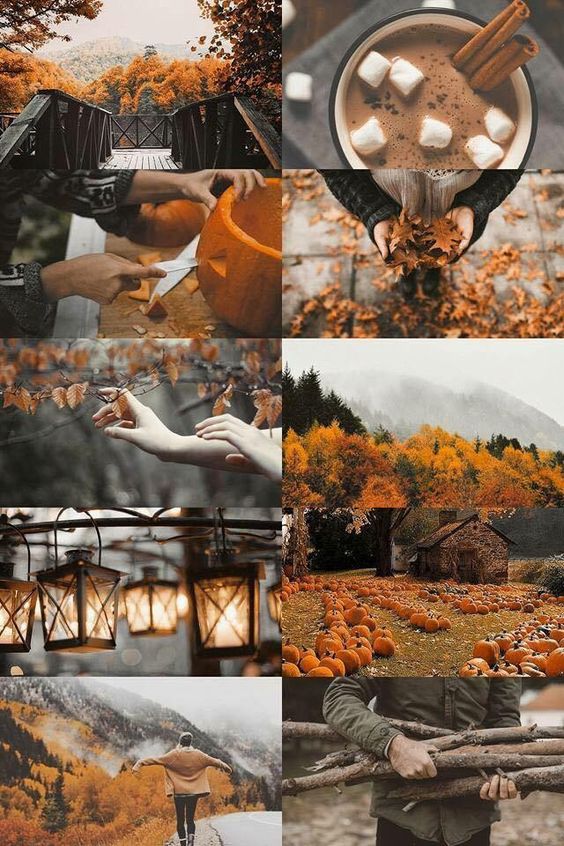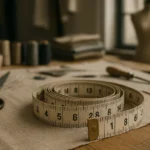
Aesthetic mood board
Designing is more than simply arranging elements; it’s about crafting an aesthetic experience, an emotion. Among the plethora of tools and resources available to designers, an aesthetic mood board stands out as indispensable aid in achieving this goal. These visual collages serve as potent vehicles for conveying ideas, eliciting emotions, and setting the aesthetic tone for creative projects. In this exploration, we’ll delve into the essence of boards, uncovering their significance, process, design elements and impact on design aesthetics.
At its core, an aesthetic mood board is a curated collection of images, textures, colors, and words meticulously assembled to capture a specific ambience, feeling, aesthetic, or theme.
An aesthetic mood board serves as a visual roadmap, guiding designers through the intricate landscape of creative expression. Whether conceptualizing a minimalist interior, a vibrant brand identity, or a tranquil landscape, those boards provide a tangible physical manifestation of abstract design ideas. Additionally, mood boards are utilized in various professional contexts, including business environments, to align activities and establish points of reference.

Ocean Mood Board – pinterest.com
Introduction to Mood Boards
Mood boards are a powerful tool for creative professionals to visualize and communicate their ideas, concepts, and themes. They serve as a visual representation of a project’s mood, atmosphere, or style, and can be used to convey a specific feeling or emotion. A mood board template is a pre-designed layout that helps compile and arrange images, colors, textures, and other visual elements to create a cohesive and inspiring board. By using mood board templates, designers, marketers, and product teams can streamline their creative process and ensure that everyone is on the same page. These templates provide a structured approach, allowing creative professionals to focus on the content and overall vision rather than the layout. Whether you’re working on a branding project, interior design, or any other creative endeavor, mood boards can help you organize your thoughts and present your ideas clearly and effectively.
Benefits of Mood Boards for Creative Professionals
Mood boards offer numerous benefits for creative professionals, including the ability to organize and visualize ideas, communicate design concepts, and collaborate with team members. They provide a platform for creative professionals to collect and curate inspiring visuals, define a creative vision, and convey a specific mood or style. Mood boards can also help to establish a strong foundation for a project, ensuring that everyone is on the same page and streamlining the design process. By using mood boards, creative professionals can save time, increase productivity, and produce high-quality work. The visual nature of mood boards makes it easier to communicate complex ideas and concepts, fostering better understanding and collaboration among team members. Additionally, mood boards can serve as a reference point throughout the project, helping to maintain consistency and coherence in the final output.
Starting an Aesthetic Mood Board
The journey of crafting a mood board begins with inspiration—a spark that ignites the creative process. Mood boards make collaboration easy by allowing team members to comment, share, and access foundational ideas. Designers scour diverse sources, from photos of nature’s serenity to urban landscapes bustling with energy, seeking stimuli that resonate with and inspire their vision. Each image, color swatch, or snippet of line of text serves as a building block, contributing to the overall narrative of the now created on board.
Consider, for example, the creation of a mood board for a boutique coffee shop. The designer may draw inspiration from the cozy warmth of rustic interiors, the aroma of freshly ground beans, and of course the inviting ambience of communal spaces. Through a careful selection of images depicting plush armchairs, steaming cups of espresso, and earthy tones, the aesthetic mood board begins to take shape, encapsulating the essence of the envisioned space.

Mood board – pinterest.com
Assembling the elements, shapes and features to create a mood board is akin to orchestrating a symphony, with each component harmonizing to create a cohesive whole. Designers employ a blend of intuition and strategy, arranging images, shapes and textures in a manner that evokes the desired emotion. From the juxtaposition of contrasting hues to the careful spacing of elements, every decision contributes to the board’s aesthetic appeal.
The layout and style of an aesthetic mood board play a pivotal role in conveying its intended message. A cluttered composition may overwhelm the viewer, diluting the impact of individual elements. Conversely, a well-balanced arrangement fosters a sense of coherence, allowing the viewer to seamlessly navigate through the board and visual narrative.
Modern vs Traditional Solutions for Creating an Aesthetic Mood Board
In the digital age, technology has totally revolutionized the creation of mood boards, offering designers an array of versatile tools at their fingertips. Digital tools allow users to easily drag and drop files into their mood boards, enhancing customization and integration of personal visual elements. Software applications such as Adobe Creative Cloud and Canva enable designers to craft digital mood board templates with ease, incorporating images, fonts, and colour palettes with precision and finesse. This digital evolution has not only streamlined the design process but has also facilitated collaboration among team members, transcending geographical boundaries.
While digital platforms offer convenience and flexibility, traditional methods of mood board project creation continue to hold sway, imbuing the process with a tactile dimension. Armed with scissors, glue, and a blank canvas, designers embark on a fun, hands-on journey, infusing each cutout with intention and meaning. Additionally, the tactile nature of physical mood board and project boards fosters a deeper connection with the creative process, allowing designers to engage their senses fully.
Beyond their utility as design tools, mood boards serve as powerful communication aids, bridging the gap between designers, clients, and stakeholders. By offering a visual representation of abstract concepts, mood boards facilitate dialogue and consensus-building, ensuring that everyone involved in the design project shares a common vision. Whether presenting a concept to a prospective client or seeking feedback from colleagues or clients, mood boards serve as persuasive tools, compelling viewers to immerse themselves in the project and represent the envisioned world.
1. Visual Mood Boards
Visual mood boards are perhaps the most common type, serving as a visual brainstorming tool for designers. They help set the visual direction for a project by comprising a collection of images, photographs, and illustrations that reflect the desired aesthetic, mood, or theme. Whether it’s for a branding campaign, website design, or interior décor, visual mood boards provide a comprehensive overview of the intended style and atmosphere.
2. Color Boards
As the name suggests, most mood boards focus primarily on color palettes and combinations. They help designers explore different color schemes and their emotional impact on the viewer. Designers can explore different ways of arranging color schemes to achieve the desired emotional impact. By arranging swatches, gradients, and color samples, designers can establish the mood and tone of a project more effectively. Moreover, color mood boards are especially useful in fields such as graphic design, branding, and product development, where color plays a crucial role in shaping perception.
3. Texture Boards
Texture mood boards bring designs to life by showcasing various tactile elements, patterns, and materials. Whether it’s the roughness of weathered wood, the softness of velvet, or the sheen of metallic surfaces, texture boards allow designers to convey the sensory experience they aim to evoke. Additionally, these boards are particularly valuable in industries like interior design, fashion, and product packaging, where the tactile quality of materials greatly influences consumer perception.

Texture mood board – pinterest.com
4. Thematic
Thematic mood boards revolve around a central theme or concept, weaving together imagery, symbols, and motifs that convey a specific narrative or idea. These boards draw on various inspirations to convey a specific narrative or idea. Whether it’s vintage nostalgia, futuristic innovation, or natural serenity, thematic boards help designers communicate overarching themes and messages. Moreover, they are widely used in advertising campaigns, editorial design, and event planning, where storytelling and emotional resonance are paramount.
5. Storyboard
Storyboard mood boards take a sequential approach to visual storytelling, breaking down narratives into a series of interconnected images or scenes. Taking notes can enhance the storytelling process by documenting ideas and feedback. Commonly used in film, animation, and multimedia projects, storyboard boards help visualize the progression of a story, from beginning to end. By arranging images in chronological order, designers can map out the flow of events, pacing, and visual continuity.
6. Interactive
With the advent of digital technology, interactive mood boards have emerged as a dynamic alternative to traditional static collages. Users can upload their own images and designs to create unique interactive mood boards. These multimedia platforms allow users to explore design concepts through interactive elements such as animations, videos, and clickable links. Whether it’s a web design prototype, a mobile app interface, or a virtual reality environment, interactive mood boards offer a more immersive and engaging way to experience design concepts.
7. Seasonal
Seasonal mood boards are inspired by the changing seasons and the associated colors, textures, and motifs. Whether it’s the vibrant hues of spring, the warm tones of autumn, or the icy blues of winter, seasonal boards capture the essence of each season and its unique aesthetic. Overall, they are commonly used in fashion design, interior décor, and marketing campaigns to align with seasonal trends and themes.

Seasonal mood board – pinterest.com
8. Brand Identity
A brand mood board focuses on capturing the essence of a brand’s personality, values, and visual identity to create a professional and cohesive brand presentation. They incorporate elements such as logos, typography, color palettes, and imagery that reflect the brand’s identity and resonate with its target audience. Overall, brand identity boards serve as a reference point for designers, ensuring consistency and coherence across all brand communications and touchpoints.
Aesthetic Mood Board in Fashion
The impact of mood boards extends far beyond the realm of design, permeating diverse industries and disciplines. From fashion to film, architecture to advertising, the principles of mood board creation find application in myriad contexts. Whether conceptualizing an haute couture collection or storyboarding a blockbuster film, the ability to evoke emotion and create ambience through visual storytelling is a hallmark element of successful creative endeavors.
In the realm of fashion design, mood boards serve as the conceptual foundation upon which entire collections are built. Designers draw inspiration from diverse sources, using materials ranging from art and architecture to cultural trends and historical references to create them. Additionally, by distilling these influences into a cohesive narrative, designers can infuse their collections with depth and meaning, transcending mere aesthetics to create immersive experiences that resonate with audiences.
Tips for Creating a Mood Board
Creating a mood board can be a fun and creative process, but it requires some planning and strategy. Here are some tips for creating a mood board: start by selecting images and other visual elements that inspire you, use a template or blank canvas to organize your elements, experiment with different layouts and designs, and don’t be afraid to try new things. It’s also important to consider the theme, style, and aesthetic of your project, and to use a consistent color palette and typography. Additionally, mood boards can be used to find inspiration, develop ideas, and communicate with team members and stakeholders. Remember to keep your board focused and cohesive, ensuring that all elements contribute to the overall vision. By following these tips, you can create a mood board that not only inspires but also effectively communicates your creative ideas.
Common Mistakes to Avoid
When creating a mood board, there are several common mistakes to avoid. These include: not having a clear vision or direction, using too many images or elements, not considering the theme or style of the project, and not leaving enough white space. It’s also important to avoid using low-quality images, not customizing the template or design, and not saving and sharing the mood board properly. By avoiding these mistakes, creative professionals can create effective and inspiring mood boards that help to communicate their ideas and concepts. Ensuring that your mood board is well-organized and visually appealing will make it a more powerful tool for conveying your creative vision and aligning your team.
Advanced Techniques for Mood Boards
For experienced creative professionals, there are several advanced techniques for creating mood boards. These include: using color swatches and palettes to create a consistent look and feel, experimenting with different textures and shapes, and incorporating icons and graphics to add visual interest. Additionally, mood boards can be used to create a personal collection of images and inspiration, and to develop a brand or aesthetic. By using these advanced techniques, creative professionals can take their mood boards to the next level and create truly inspiring and effective visual representations of their ideas and concepts. Mood boards can be created using various templates and digital tools, and can be shared and collaborated on with team members and stakeholders. By uploading images, customizing templates, and using design elements, creative professionals can create mood boards that convey their vision and inspire their audience.
In conclusion, mastering the art of creating mood boards is essential for designers seeking to imbue their creations with depth, emotion, and meaning. Mood boards can help set a clear vision for the next project, making it easier to organize and creatively plan upcoming initiatives. By harnessing the power of visual storytelling via creating an inspiration board, designers can transcend the constraints of language, captivating viewers with narratives that resonate on a visceral level.
Whether crafting a brand identity, conceptualizing an interior space, or designing a fashion collection, boards serve as potent tools for transforming abstract ideas into tangible realities. As we navigate the ever-evolving landscape of design, the art of creating mood boards remains a timeless testament to the enduring power of visual communication.




